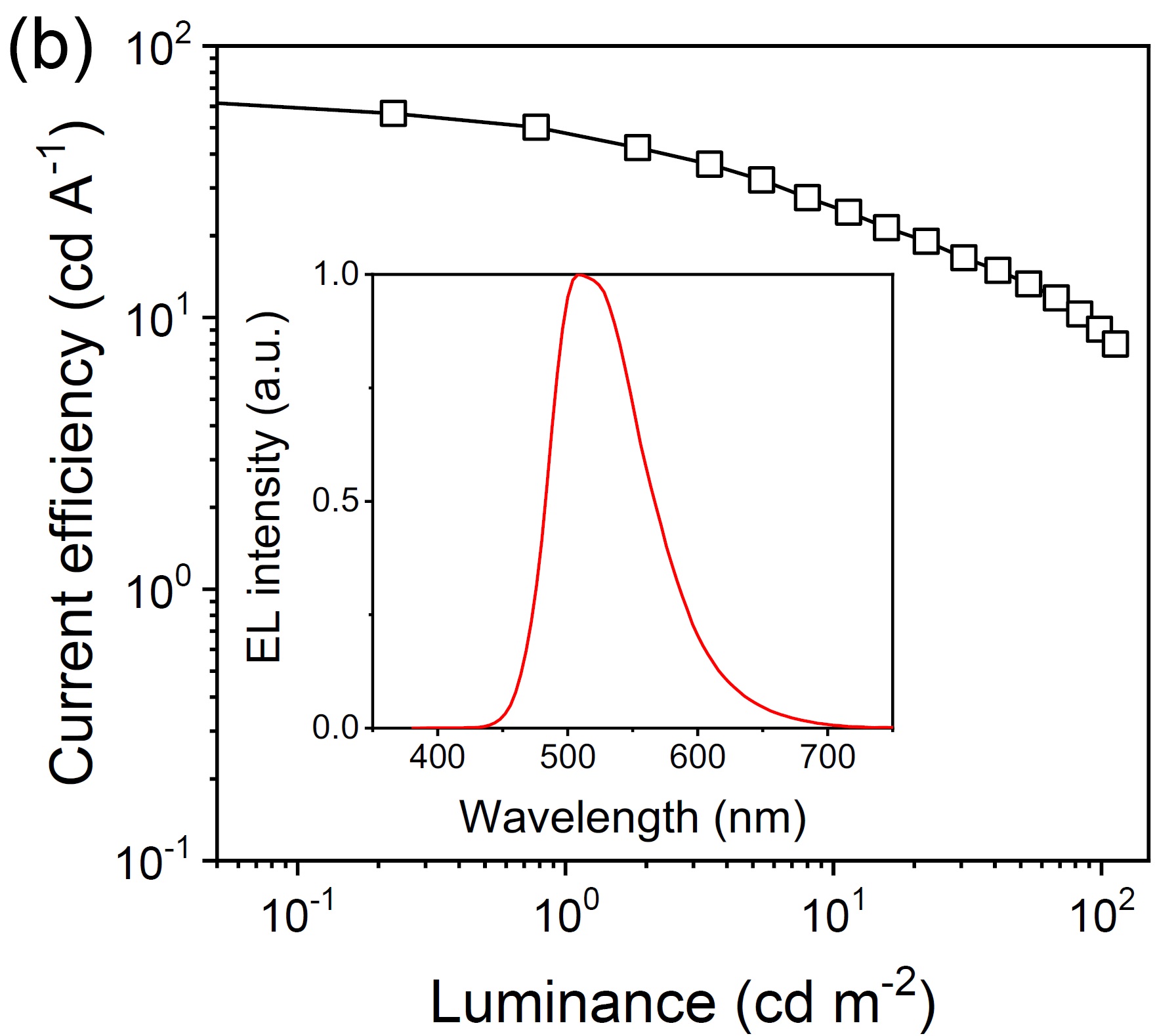[Chem.Eur.J.] Phosphorescent k3‐(N^C^C)‐Gold(III) Complexes: Synthesis, Photophysics, Computational Studies and Application to Solution‐Processable OLEDs
Together with the Nevado group, we report a series of new phosphorescent k3‐(N^C^C)‐Au(III) complexes for OLEDs.

Efficient OLED devices have been fabricated using organometallic complexes of platinum group metals. Still, the high material cost and low stability represent central challenges for their application in commercial display technologies. Based on its innate stability, gold(III) complexes are emerging as promising candidates for high performance OLEDs. Here, a series of alkynyl‐, N ‐heterocyclic carbene (NHC)‐ and aryl‐gold(III) complexes stabilized by a k 3 ‐(N^C^C) template have been prepared and their photophysical properties have been characterized in detail. These compounds exhibit good photoluminescence quantum efficiency ( η PL ) of up to 33%. The PL emission can be tuned from sky‐blue to yellowish‐green colours by variations on both the ancillary ligands as well as on the pincer template. Further, solution‐processable OLED devices based on some of these complexes display remarkable emissive properties ( h CE 46.6 cd.A ‐1 and h ext 14.0%) thus showcasing the potential of these motifs for the low‐cost fabrication of display and illumination technologies.
